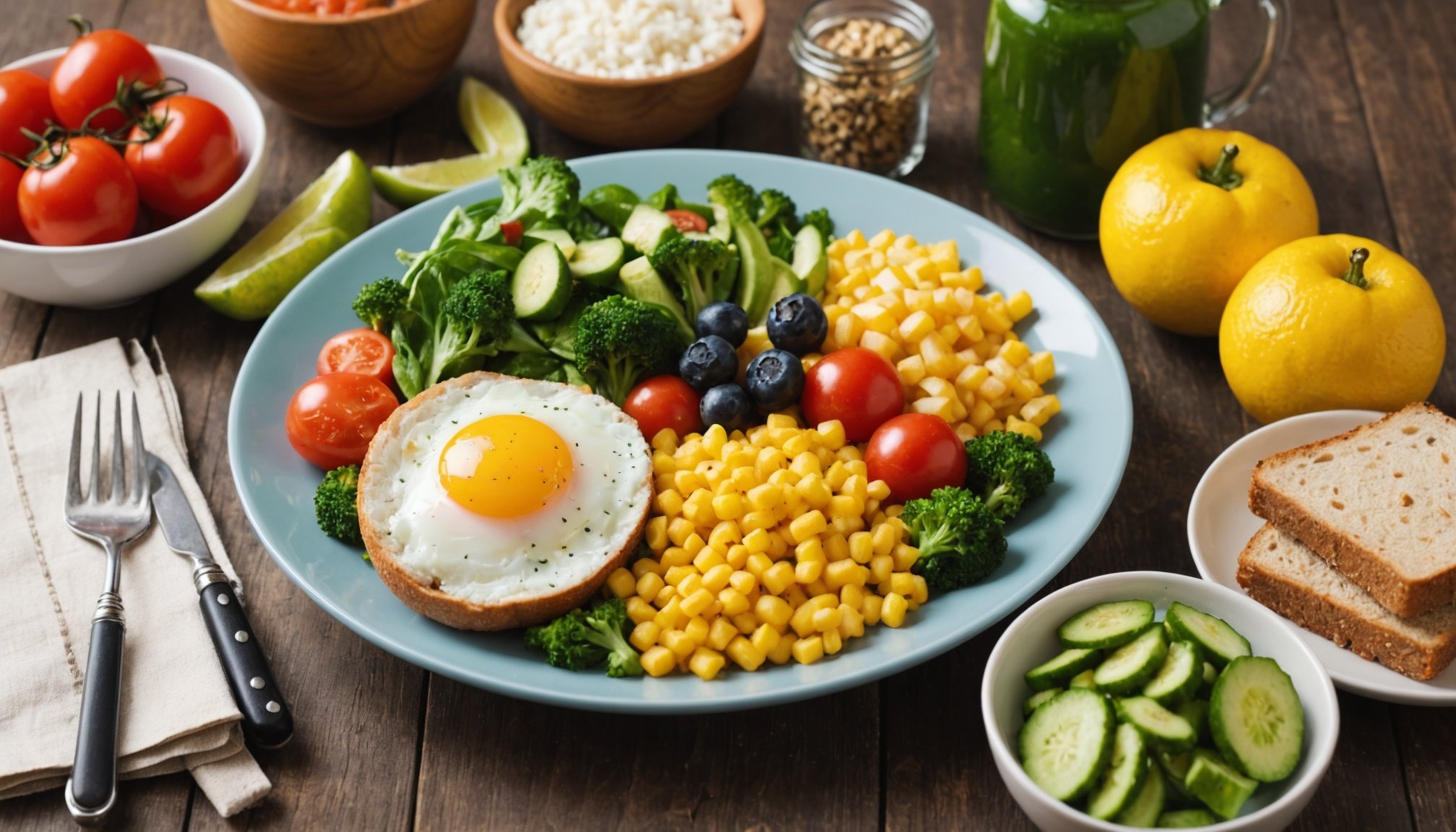Key Ingredients for a Successful Diet Plan
Crafting a diet plan requires a focus on whole foods, which play a pivotal role in managing diabetes effectively. Whole foods not only provide essential nutrients but also help to maintain energy levels and blood sugar. They are rich in fibre, vitamins, and minerals which contribute to balanced meals and overall health.
For teenagers with type 2 diabetes, it’s crucial to consume a variety of essential nutrients that aid in growth and health management. Important nutrients to include are proteins, healthy fats, and complex carbohydrates. Proteins are vital for muscle development, while complex carbohydrates such as those found in grains and legumes help sustain energy.
Additional reading : Unlock radiant skin: the ultimate guide to vital micronutrients for aging adults
Structuring balanced meals involves combining different food groups to ensure a well-rounded intake of nutrients. A balanced meal might include lean protein like chicken or fish, plenty of vegetables, a modest portion of grains, and a source of healthy fats like avocado or nuts. The goal is to create meals that are satisfying, nutritious, and maintain a stable blood glucose level. By prioritising these elements, teens can navigate their dietary needs successfully and enjoy varied, wholesome meals.
Nutritional Guidelines for Teens
Navigating the teen years with optimal health relies heavily on targeted dietary recommendations. Teens require a robust caloric intake aligned with their growth trajectory and physical activity levels. This ensures that energy needs are met without compromising development. Portion control emerges as a formidable strategy here, helping to moderate intake while maintaining nutritional balance.
In the same genre : Harnessing bariatric surgery: a game changer in type 2 diabetes control
Understanding dietary recommendations for teens provides a foundation to meet their fluctuating energy demands. Teens should consume a blend of macronutrients: carbohydrates, proteins, and fats, each in proportions that support both growth and energy.
The essence of effective caloric intake lies in ensuring it complements their dynamic lifestyle. Active teens may need higher caloric intake to fuel their busy routines. Meanwhile, more sedentary individuals would benefit from a recalibrated intake to match reduced energy expenditure.
Portion control is vital to preventing excessive calorie consumption, helping maintain a healthy weight. Practical strategies include using smaller dishes, serving single portions, and focusing on eating mindfully. Portions should match individual needs; this tailored approach prevents both overeating and under-nourishing, supporting metabolism.
These guidelines aim to nurture teens’ growth while fostering lifelong healthy eating habits.
Sample Meal Plans for Teens
Creating effective meal prep strategies can significantly simplify the daily routine for teenagers. Tailoring meals that are quick to prepare can maintain their dietary needs without disrupting busy schedules.
Sample meal ideas might include preparing a batch of chicken stir-fry with brown rice or a quinoa salad packed with nutrient-rich ingredients. It’s essential that these meals are not just tailored to teens’ dietary requirements but also appealing to their taste buds.
Incorporating healthy recipes into daily meals encourages a balanced diet that meets nutritional needs. Recipes like whole grain wraps or veggie-packed omelettes can be enticing. The use of versatile ingredients like avocados and nuts ensures meals are interesting and varied in texture.
Lifestyle integration involves making meal times feasible across different settings. For teens constantly on the move, portable options like mason jar salads are both practical and nutritious. This method allows teens to maintain consistency in their diet even during hectic days filled with school and extracurricular activities.
Ultimately, meal planning for teens should focus on nutrition, taste, and convenience, ensuring that healthy eating becomes a sustainable lifestyle choice.
Tips for Incorporating Foods into the Diet
Incorporating healthier foods into a teenager’s diet can be a rewarding yet challenging task. One effective method is through food swaps that focus on reducing sugar and unhealthy fats. For instance, replacing sugary drinks with infused water or smoothies offers both hydration and nutritional benefits with fewer calories. Similarly, substituting white bread with whole-grain alternatives can improve fibre intake.
Snack suggestions play a pivotal role in maintaining energy levels throughout the day. Easy-to-grab options like almonds, fruit slices, or yoghurt help satisfy hunger without compromising health. These snacks support a teen’s dynamic lifestyle by providing quick nutrition.
Delicious and healthy meals don’t require culinary expertise, thanks to simple cooking techniques. Grilling or steaming vegetables instead of frying can retain nutrients and enhance flavour without added calories. Adding herbs and spices rather than salt can also elevate taste while keeping sodium levels in check.
An impactful swap, thoughtful snacks, and clever cooking can significantly transform eating habits, encouraging teens to embrace a nourishing diet. By prioritising these elements, maintaining healthy eating becomes a seamless and enjoyable part of everyday life. Families can gradually make these adaptations ensuring long-term adherence and fostering lasting positive habits.
Considerations for Teen Lifestyle
Navigating social activities, dining out, and peer pressure can be challenging for teenagers trying to maintain a healthy lifestyle. Social gatherings often revolve around food, making it crucial for teens to make mindful choices without feeling left out. One effective strategy involves planning ahead. If attending a party, snacking on healthy options beforehand can prevent overeating.
Dining out presents another challenge, with many menu options high in calories and low in nutritional value. Encouraging teens to select meals with more vegetables and lean proteins can contribute to better choices. Sharing dishes or opting for an appetiser instead of a main course also helps in managing portion sizes.
Peer pressure may influence dietary habits, with teens often feeling compelled to conform to how friends eat. Educating them on how to voice their preferences confidently fosters resilience. Offering alternative activities that don’t centre around food can also form a part of positive social dynamics.
Key tips include:
- Planning healthy snacks before social events
- Choosing vegetable-rich dishes when dining out
- Developing confidence to resist peer pressure
These approaches underpin a balanced, health-conscious lifestyle, empowering teenagers to embrace habits that promote long-term well-being.











